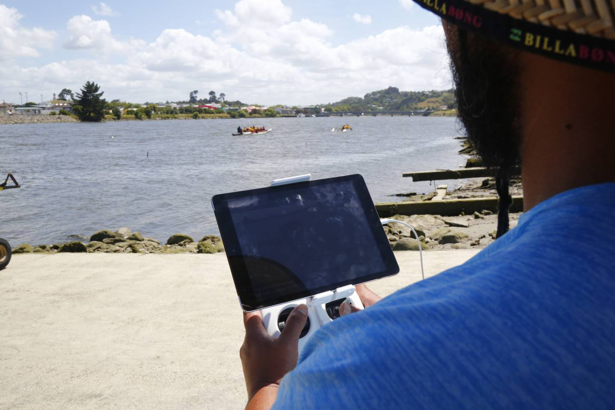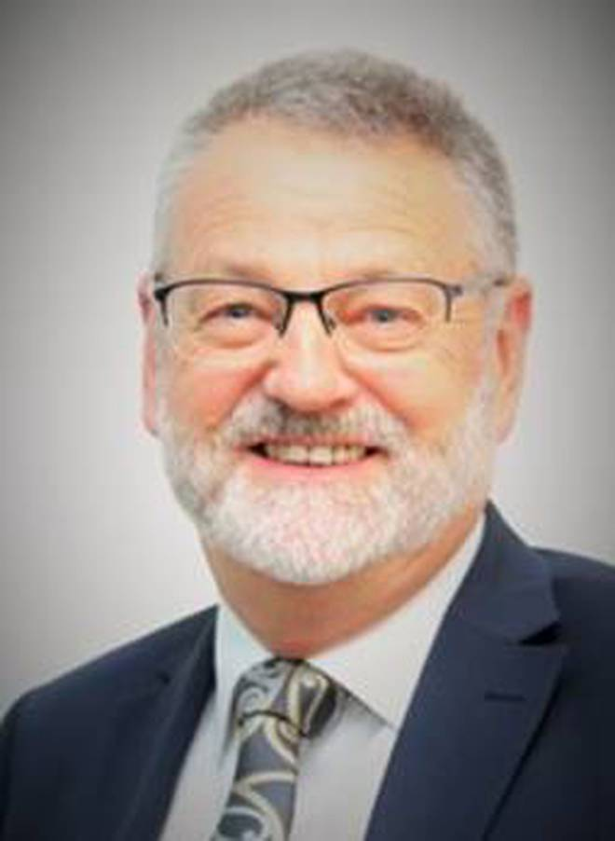
Air New Zealand wants tougher rules for drones after near-miss with passenger plane
Statistics show only a small percentage of drone complaints result in disciplinary measures

By Meghan Lawrence
Air New Zealand is demanding tougher rules for drone operators after a near-miss at Auckland Airport involving a flight with 278 people onboard.
NZ92 from Tokyo was coming into land at Auckland when it encountered a drone estimated to be just five metres away from the 777-200 aircraft on Sunday.
“The incident is the second example of reckless drone use potentially endangering passenger safety this month, with flight operations at Auckland Airport halted for 30 minutes on 6 March when an Air New Zealand pilot reported a drone within controlled airspace,” Air NZ said.
Air New Zealand chief operations and integrity standards officer Captain David Morgan said serious drone incidents were on the rise - and policymakers need to take action and introduce stronger penalties for irresponsible operators.
“NZ92 was just metres away from a serious incident on Sunday,” he said.
“The pilots spotted the drone at a point in the descent where it was not possible to take evasive action.
“It passed so close to the incoming aircraft that they were concerned it may have been ingested into the engine.”
A later inspection of the aircraft showed the drone had not gone into the engine.
But it was clear “the time has now come” for tougher deterrents regarding reckless drone use around airports in order to safeguard travellers.

That included introducing the penalty of imprisonment in the case of life-threatening incidents.
Under current regulations, individual drone operators who breach Civil Aviation Rules can receive a fine of up to NZ$5000 (US$3,645).
Morgan said Air New Zealand was committed to pushing for tougher and more consistent penalties to raise awareness of the regulations around drone use and the potentially serious consequences of breaching them.
Only one drone operator prosecuted in five years
Air traffic control organisation Airways had also expressed its concern around an increasing number of drone sightings in controlled airspace.
In a statement, the organisation said it had received reports of more than one unauthorised drone operating per week, over the past year.
“Air traffic control technology is currently unable to detect small objects such as drones so we rely on drone operators to follow the rules and register with us before they fly to ensure all aircraft are integrated safely into our airspace.”
Airways was “actively looking” for solutions, it said, and a new system would be trialled within the next three months.
The airline’s call for action follows near figures that show that the huge growth in the use of drones in the past five years has seen a marked rise in complaints to the Civil Aviation Authority (CAA).
But enforcement action is yet to take off, with only about four per cent of complaints resulting in disciplinary measures.
Data provided under the Official Information Act by the CAA to the Herald shows a total of 696 complaints against Remotely Piloted Aircraft Systems (RPAS) have been made since March 2013, but only 27 of those have resulted in enforcement action.
Hobby and commercial drones exploded in popularity around 2014 and have become more popular as their prices become cheaper, their technology improves and they become ever more accessible.
But their rise in popularity has also come with the introduction of legalities and ethics, with the CAA releasing new rules for the flying of unmanned aircraft in August 2015.
Of the 27 complaints where action was taken, 11 resulted in warning letters, 15 in infringement notices and one person was prosecuted. 669 resulted in no enforcement action taken.
Information provided by the CAA said when no enforcement action is taken, the Special Flight Operations and Recreational Aviation Unit of the CAA conducts educational activities to assist operators’ compliance with Civil Aviation Rules.
The first case the CAA launched against a drone operator was in 2016.
Simon Roy Reeve, 38, was found guilty on three charges involving flying his drone at Pines Beach, north of Christchurch, while fire crews and a helicopter battled a blazing scrub fire.
Reeve was charged with causing danger by operating his drone and two counts of breaching controlled airspace.
At his sentencing in July 2016 he was ordered to make a NZ$500 (US$365) donation to a charity of his choice and discharged without conviction. He was also fined NZ$250 (US$182) for breaching controlled airspace.
Despite this being the only CAA prosecution against a drone operator, figures detailing the rise in complaints to the CAA show that concerns reported have risen from a total of eight in the year between March 2013-2014, to 289 reports between March 2017-2018.

The top five reasons for these complaints were; no consent for flight over person or property, operating in controlled airspace without clearance, hazardous operations, operating within 4km of an aerodrome, and proximity with other aircraft.
The Civil Aviation Rules, detailed in Part 101 and Part 102 of the Civil Aviation Act, also address not operating an aircraft that is 25kg or larger without certification, flying only in daylight, and minimising hazards to persons, property and other aircraft.
Director of Civil Aviation Graeme Harris said the CAA supports the call by Air NZ for greater education and awareness of the rules for flying drones.
“New Zealand is not alone in having difficulty coming to terms with the rapid rise in drone use in our skies.
“This is a very new technology that is available for both commercial and recreational purposes. We do not want to unreasonably curb the use of drones but we are absolutely committed to ensuring they are used safely.”
He said a new digital media campaign would be launched in the coming months and a review of current drone rules is nearing completion.
“Around the world governments are applying a risk-based approach to the evolution of drone regulation as they attempt to facilitate the economic and safety benefits the technology offers while at the same time managing the new risks they create,” Harris said.
“There is no excuse for anyone flying a drone near an airport without authorisation or in the flight path of aircraft. Such action is highly irresponsible and is the height of stupidity.
“Current law provides significant penalties for such action and the CAA will act against anyone who puts the lives of the travelling public at risk.”
While the CAA is responsible for investigating inappropriate drone usage, the Privacy Commissioner and Police also have some jurisdiction to look into infractions.
Police frontline staff are often required to respond to incidents, but forward all details to the CAA.
“If a [drone] is used in the commission of a criminal act, police may consider charging the operator with an appropriate criminal offence,” a spokeswoman said.
A case that went to court after police action was that of Chilean tourist Jorge Eduardo Riquelme Cruz.
Cruz, 33, was convicted in February this year on one charge of operating an unmanned drone in a manner that caused unnecessary danger to firefighting pilots and their helicopters.
Riquelme Cruz illegally flew a drone through a firefighting operation in Central Otago on January 3 and his actions meant seven helicopters were grounded, causing a delay in battling a 200ha bush fire on Mt Alpha.
He was convicted at the Hamilton District Court and the judge ordered the forfeiture of his drone to the Crown.
Privacy Commissioner John Edwards told the Herald in February that he was keen to look into whether action being taken against drone operators was sufficient.
“Whether those rules are actually fit for purpose and are being enforced is something I think I need to have a look at and I am going to discuss this with the CAA,” he said.
“One of the difficulties I have, and I assume the CAA would also have, is that there is no registration of the devices so it is very difficult to actually find out who is operating it and therefore have someone to investigate.”
A spokesperson for the Office of the Privacy Commissioner said since February its office has had discussions with the CAA on how it can improve its guidance for drone users.
“Our office is taking the approach to driving the message that people should be respectful of the privacy of others in the community and in other settings.
“CCTV cameras, drones, mobile phones are all of a type of potentially privacy-intrusive technology. So much depends on whether they are used responsibly or irresponsibly. We obviously advocate for responsible use.”
President of the NZ Airline Pilots Association Tim Robinson said laws around the use of drones need to be enforced appropriately.
“Drone-related accidents and incidents have potential to put the welfare and lives of air transport crew and the travelling public at risk.
“There is a need for better education and regulation for the use of drones, as many drone operators are unaware of the risks and rules about where they can be operated,” he said.
“We look forward to working with the Ministry of Transport and the CAA regarding improved education action and enforcement, including the possibility of registration in line with international best practice.”
This year alone, the Herald has reported on many stories of drones allegedly being used inappropriately.
In February Morgaine Halligan and her mother Melissa Rays reported a drone hovering over private property while they were sunbathing, and then early in March a Waiheke Island man told the story of a drone spying on him while he was getting dressed for bed.
This incident was followed a few days later by a Drone causing delays at Auckland Airport after flights were diverted because a drone was spotted on the approach to the runway.
A CAA spokeswoman said if someone believes a drone is breaching Civil Aviation Rules they should try to get as much information as possible about the drone and operator and report it to the CAA.